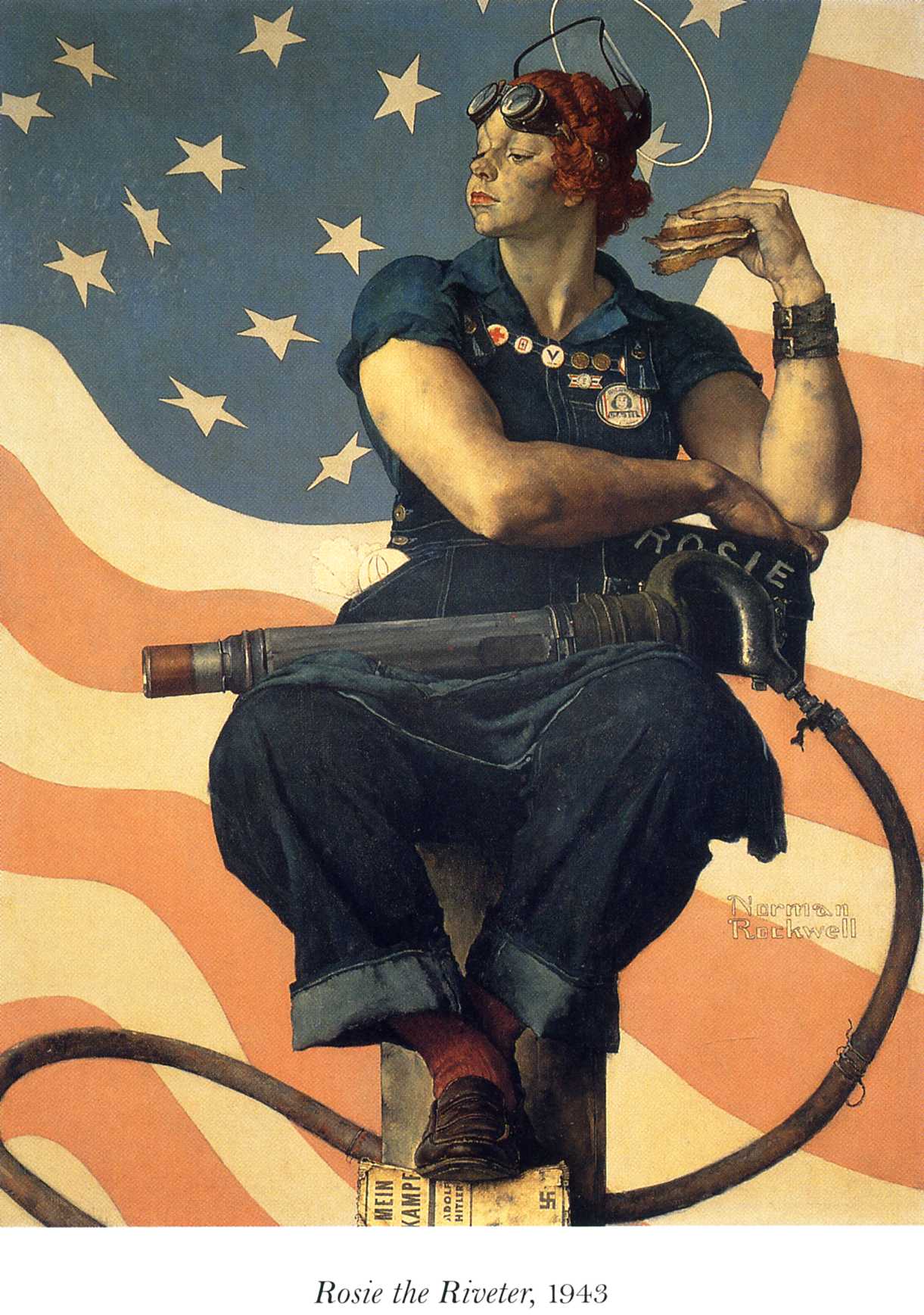Mary Doyle Keefe, Norman Rockwell’s model for the 1943 iconic painting (pictured above) “Rosie the Riveter” died Tuesday in Simsbury, Connecticut after a brief illness. She was 92.
Since its creation, the painting has widely and proudly symbolized the millions of American women who went to work during World War II and contributed mightily to the effort, which resulted in winning the whole damn thing in 1945.
Keefe met the famous painter while a 19-year-old telephone operator living in Arlington, Vermont (Rockwell lived in neighboring West Arlington) and subsequently posed for the work of art, which debuted in the now-defunct Saturday Evening Post on May 29, 1943.
More from the Hartford Courant:
Although Keefe was petite, Rockwell’s Rosie the Riveter had large arms, hands and shoulders. The painting shows the red-haired Rosie in blue jean work overalls sitting down, with a sandwich in her left hand, her right arm atop a lunchbox with the name “Rosie” on it, a rivet gun on her lap and her feet resting on a copy of Adolf Hitler’s manifesto “Mein Kampf.” The entire background is a waving American flag.
Rockwell wanted Rosie to show strength and modeled her body on Michelangelo’s Isaiah, which is on the ceiling of the Sistine Chapel.
Keefe, who never riveted herself, was paid $5 for each of two mornings she posed for Rockwell and his photographer, Gene Pelham, whose pictures Rockwell used when he painted.
“You sit there and he takes all these pictures,” Keefe told The Associated Press in 2002. “They called me again to come back because he wanted me in a blue shirt and asked if I could wear penny loafers.”
Twenty-four years after she posed, Rockwell sent her a letter calling her the most beautiful woman he’d ever seen and apologizing for the hefty body in the painting.
High praise indeed from — quite possibly — the most famous American artist who ever lived.
Just for reference, here’s a picture of Michelangelo’s Isaiah, below:





































